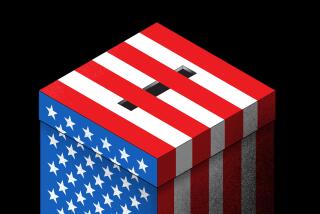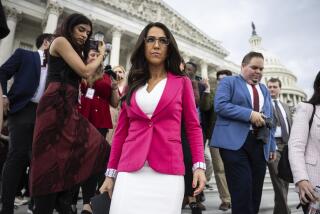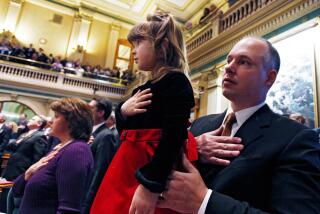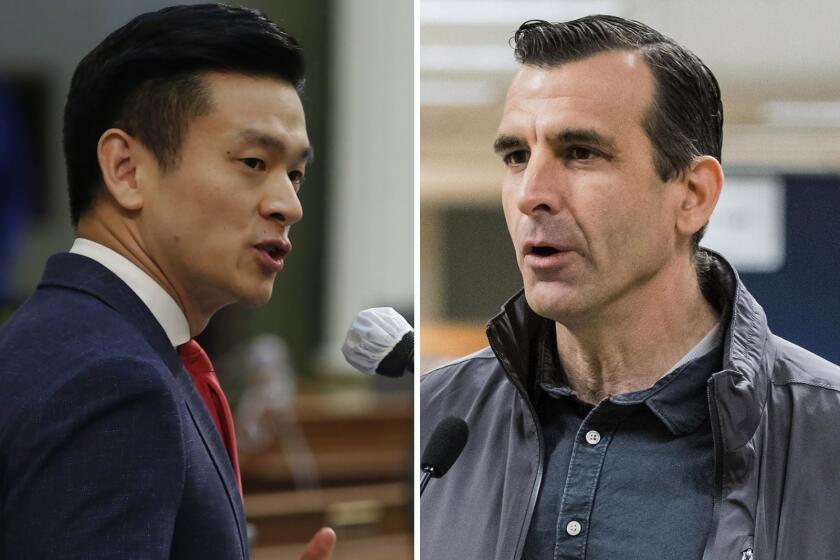Campaign ’96 / REPUBLICANS : Forbes Magazine Ad Sales Report Has Some Reading Between Lines
Is Forbes, the candidate, helping sell ads for Forbes, the magazine?
For some time now, observers of publisher Steve Forbes’ presidential campaign have speculated that part of his motivation has been to boost ad sales for the bimonthly business magazine that carries his family’s name and serves as the flagship of the publishing company his father built.
Just as his father, Malcolm S. Forbes Sr., made a splash on the society pages with his hot-air balloons, lavish parties and his castle in Morocco--and thereby raised the publication’s profile--the young Forbes may be following a more political route to the headlines, these critics have suggested.
Candidate Forbes has denied that his run for the Republican presidential nomination has anything to do with the financial welfare of Forbes magazine. He took a leave as the publishing company’s CEO in order to wage his personally financed campaign for the White House.
But this week’s Advertising Age magazine reports that Forbes’ campaign, on which he’s spent an estimated $25 million so far, may help explain a boost in his magazine’s ad sales. Forbes magazine’s advertising is up 12% over the same period last year, the publication announced in an article that included a color photograph of the candidate on the front page. Forbes’ advertising director, William Flatley, is quoted as saying that the campaign “is a positive influence” on ad sales.
But wait. Media Industry Newsletter this week says Forbes magazine ad pages for January and February are down 22% from a year earlier. “While Steve has been riding high on the campaign trail, his magazine’s ad pages have reached a low,” writes newsletter editor Steve Cohn.
Who’s right?
Cohn’s newsletter compared the ads issue-by-issue for the first two months of this year with the same period last year. The problem is that this January and February, Forbes had one less edition than in 1995 because of differences in the calendar. So Advertising Age adjusted the field a bit by adding the first issue of March.
With the additional issue, Forbes had a total of 624.6 pages of advertising, or an increase of 12% over last year. Fortune magazine, through its issue dated March 18, was down 17%, Advertising Age said, and Business Week had 9.5% fewer ads than it did during the same period last year.
Editors at Business Week and Fortune were “distressed” about the Advertising Age story, suggesting that it read like a promotion for Forbes, both man and magazine. The editors also complained that the story came at a particularly opportune time for the candidate.
The New York primary is Thursday, and Forbes managed to wrestle his way onto the ballot throughout the state despite efforts, led by Sen. Alfonse M. D’Amato (R-N.Y.), to keep the state’s delegates for the GOP front-runner, Senate Majority Leader Bob Dole of Kansas.
“Frankly, it’s disturbing,” said David Ferm, publisher of Business Week. “Ad Age has always had a tradition of publishing information based on the standard documentation. This is a distortion of the reality.”
Ferm said that he had called the publisher of Advertising Age to complain about the story.
But Advertising Age writer Keith J. Kelly stood by his article, saying that the Forbes ads had indeed shown a boost at a time when the other business magazines were suffering from a loss of ads from high-tech companies. Kelly suggested that Forbes magazine might be doing better since the Forbes campaign began to flower in January. Shortly after the first of the year, Forbes began to rival Dole in the polls. After weak showings in Iowa and New Hampshire, he then won primaries in Delaware and Arizona.
Kelly said Forbes’ candidacy appeared to give “a modest positive” to the magazine’s ad sales.
More to Read
Get the L.A. Times Politics newsletter
Deeply reported insights into legislation, politics and policy from Sacramento, Washington and beyond. In your inbox three times per week.
You may occasionally receive promotional content from the Los Angeles Times.






